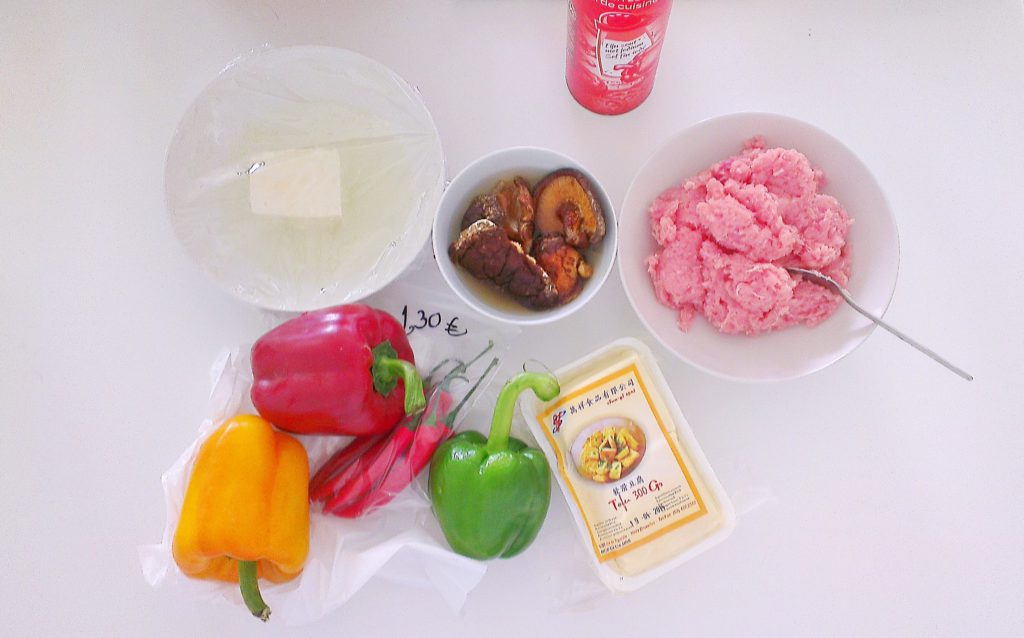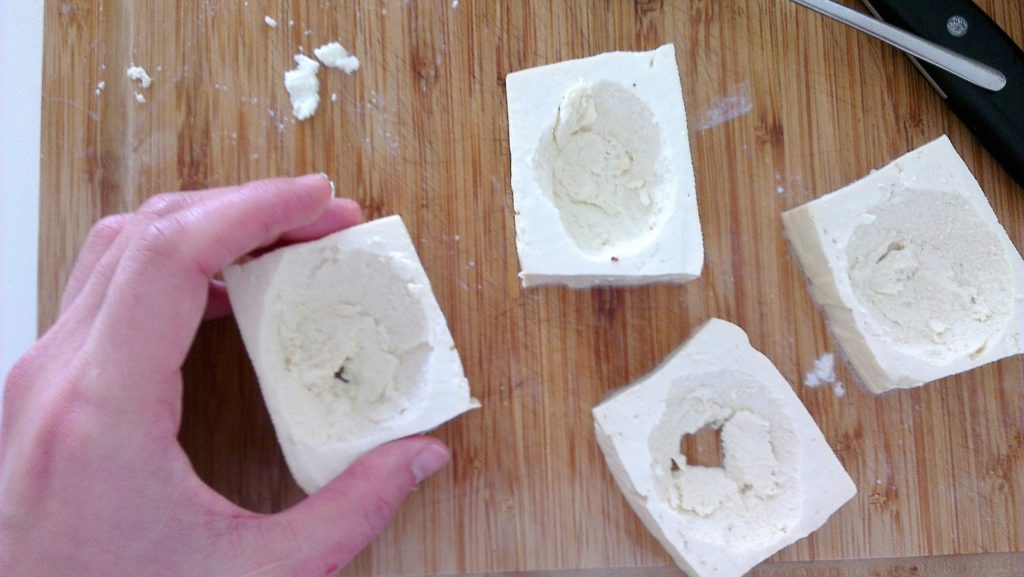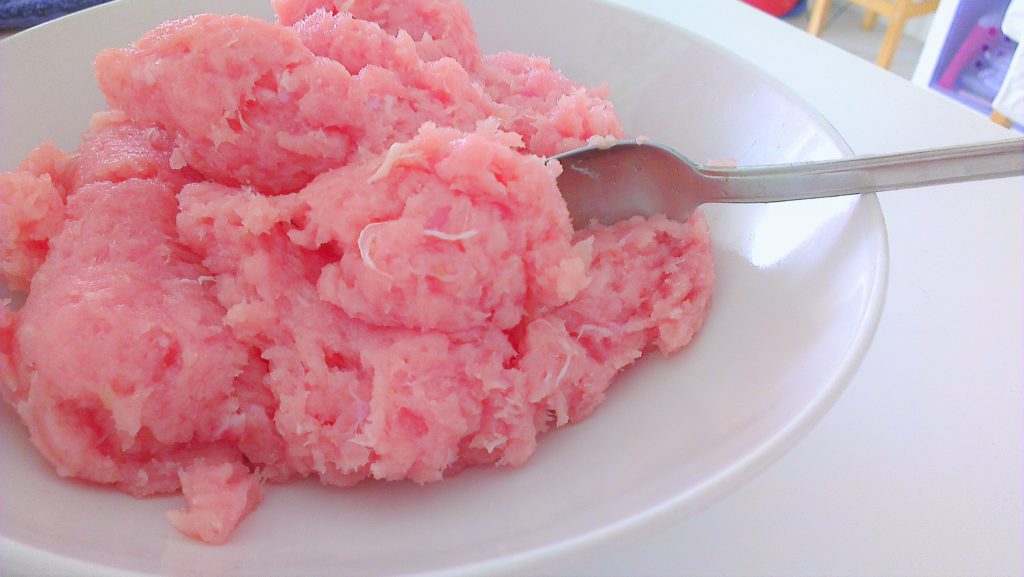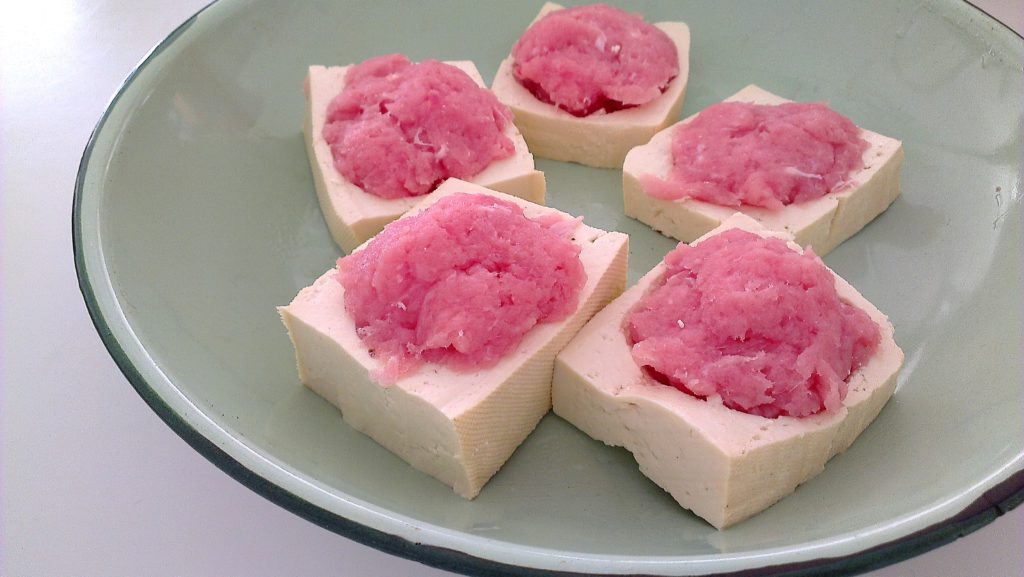Yong Tau Fu 酿豆腐 is the best known dish in the Hakka cuisine. It is a unique Chinese dish that is made of pork, fish, tofu, and a variety of soy products and vegetables. Today, I am going to teach you how to make Yong Tau Fu and the various recipes that come with it. Before that, here is the background to the dish.
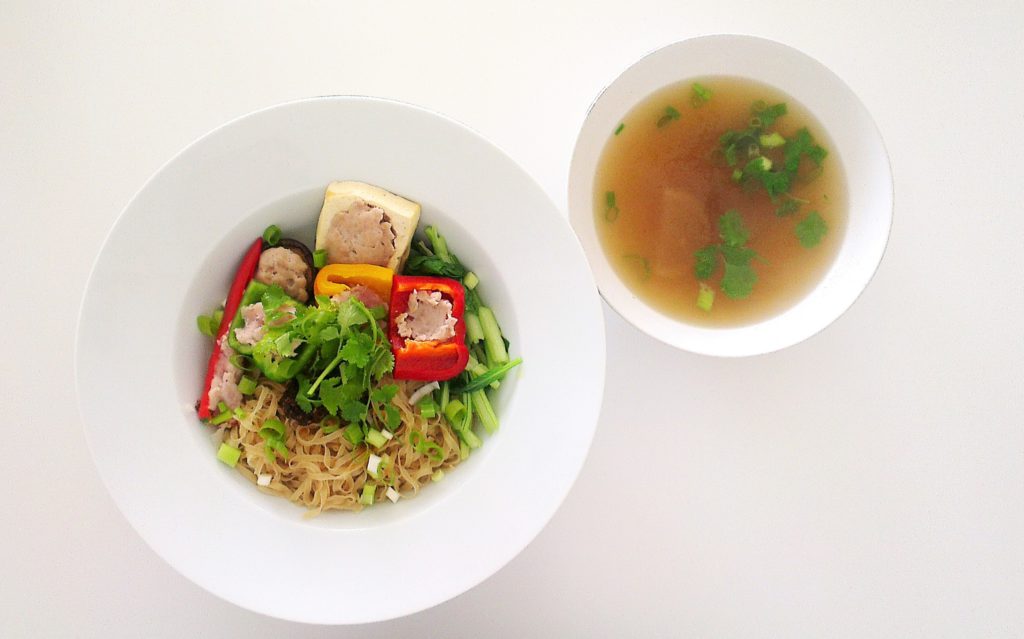
Who are the Hakkas?
Hakka is the Cantonese pronunciation of the word ‘guest’ 客家, refering to a group of immigrants from Central and Northern China who settled in the northeast regions of Guangdong province (Canton) as well as the bordering Fujian province around a thousand years ago. The word ’guest’ might be a misnomer, as the word itself might refer more to ’foreigner’ or ’non-local’.
The irony is that Guangdong natives (the Cantonese) and the Fujian natives (the Hokkiens) were not wholly local themselves. Composed of a steady immigratrion from the Central plains from 317-879AD due to the invasions by the Mongols and Tatars, the locals are actually a mix between the Hans (the original Chinese race) and the local (most likely Austro-Malay) race. This is why the Cantonese and Hokkiens today are much darker in skin colour and shorter than the other Chinese, and they have bigger eyes and more pronounced cheekbones.
Once settled there, the Cantonese call themselves Yue 越 (which is the same word used by the Vietnamese to call themselves: ‘Viet’) and the Hokkiens call themselves Min 闽. Hence the names of their cuisines today.
The Hakkas are latercomers who moved south towards the end of the Tang dynasty, when war and famine ravaged the central plains. This wave of migration took place twice: once in 900-1000AD and the other after 1127AD when the Mongols took power in Beijing.
While the origins of the Hakkas are still being disputed today, it has been noted that the Hakka language is a form of northern official language 官话 and contains similarities with the language spoken today in Zhongzhou, Henan province 河南中州.
Meizhou 梅洲, Capital of the Hakkas
Situated in the northeast corner of Canton, Meizhou 梅洲 is considered today by all Hakkas as their mecca and their cultural capital.
Because of the relative poverty of the region, Hakkas were among the major groups of Chinese to migrate overseas. They now form the fourth largest Sino-ethnic group in Singapore. You may not know it, but Hakkas are shrewd political creatures. Famous Hakkas include the founder of modern China Sun Yat-sen, former Chinese premier Deng Xiao-ping, former Singaporean Prime Minister Lee Kwan-Yew, and actor Chow Yun-fat.
Because rice, instead of wheat, is the main crop grown in the south, Hakkas found a replacement in the lack of wheat flour: tofu. They took to stuffing meat into tofu, as they would in making dumplings, the Hakkas essentially created a new dish: the Yong Tau Fu.
Today, for the best ‘yong tau fu’, one has to go to Meizhou in China.
Why ‘yong’ and not ‘niong’? The Case of the Miswritten Verb
The Chinese word ‘niang’ 酿 (pronounced in Hakka, ‘niong’) means ‘to brew’, i.e. soy sauce, wine, beer, spirits.
Because it is written as such in 酿豆腐, writers claim that the same word has the special meaning of ‘to stuff with meat fillings’ in the Hakka language.
But why is it pronounced as ‘yong’ not ‘niong’?
That is because the word has been miswritten:
The ancient word ‘秧’, means ‘to plant a seedling in the middle (of a hole)’. When one looks at its usage in old texts about culinary dishes, it also means ‘to stuff with’, hence you have stuffed chilli (秧辣椒), stuffed brinjals (秧茄子), stuffed sausages (秧腊肠). The word, currently pronounced as ‘yang’ in Mandarin, is pronounced as ‘yong’ in Hakka. Hence the mystery is solved: ‘yong tau fu’ is called ‘yong tau fu’ not ‘niong tau fu’ because it should have been written as ‘秧豆腐’, not ‘酿豆腐’.
Enough background. Now on to the simple recipe!!
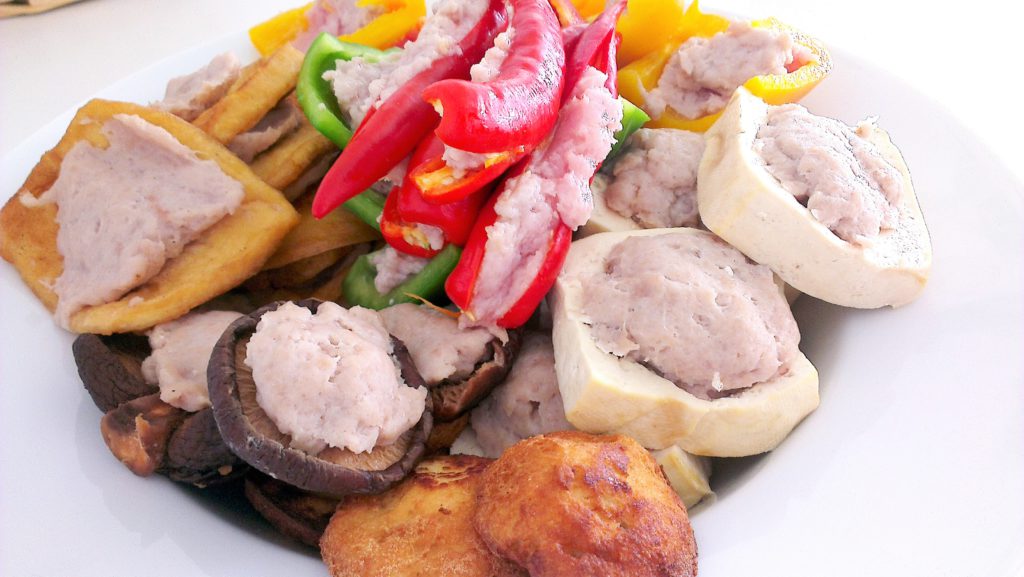
Ingredients:
- 300g cod (or any other fish with white meat)
- 300g pork (not too lean)
- 2tps salt
- Dash of white pepper
- 2tps cornfour (optional)
- 6 tbs vegetable oil
Things to be stuffed:
- 2 very hard tofu, each cut into blocks of 4
- 2 dried yuba sticks, ‘fuzhu’ in Mandarin/’daogi’ in Teochew 腐竹 (soaked in water), 6cm sections
- 6 fried tofu skin, ‘daopok’ in Teochew 炸豆腐皮/豆仆, halved
- 1 green bellpepper, emptied and cut into 8
- 1 red bellpepper, emptied and cut into 8
- 1 yellow bellpepper, emptied and cut into 8
- 6 large chillies (red or green), emptied
- 6 large dried Shitake mushrooms (soaked in water, cut away the stalk)
You do not have to use all the ingredients above. These are just a sample of a variety of things you can ‘stuff’ with. Feel free to be creative, like using courgettes, button mushrooms, tomatoes etc.
Serving: 4 meals
Instructions:
- Put your pork, fish, salt and pepper in a large blender. Blend until you have a nice firm meat filling. If using frozen fish, add some cornflour to make it stickier.
- Hard tofu: Use a teaspoon to make a crater-like hole in each block. Do not discard the carved out tofu. Heat up a wok with some oil, deep-fry these cone-like tofu. Set aside. For the tofu themselves, fill with meat filling.
- Yuba sticks: Pat dry each section. Deep-fry until crispy. Drain and set aside. When cool, coat one side with a layer of meat filling.
- Tofu skin: Cut open with scissors. Stuff with meat filling
- Bellpepper, chillies, mushrooms: Stuff with meat filling
- Once everything is stuffed, steam either over a wok or in a steamer by batch for about 10 minutes.
Now, you have different pieces of Yong Tau Fu that you can use for the various Yong Tau Fu dishes!! Personally, I store them in boxes in the fridge, so that I can make various dishes in the course of the days that follow.
Follow me on my Yong Tau Fu journey where I will show you what we can do with these stuffed goodies!
Carry It Like Harry – Yong Tau Fu recipe series:
